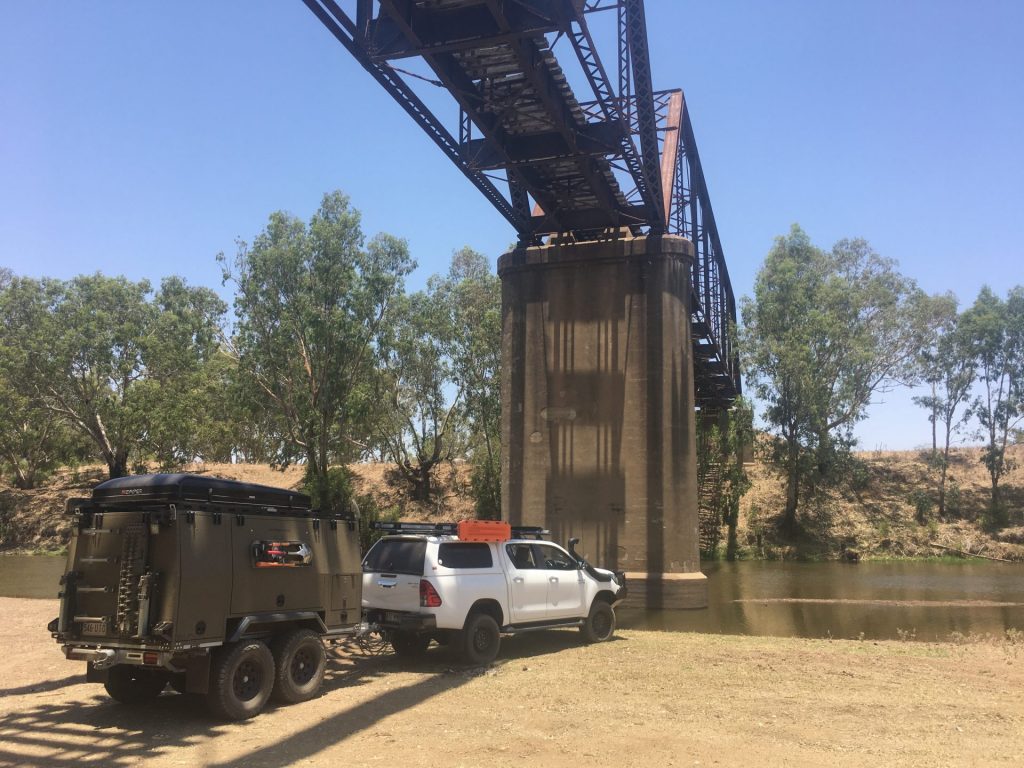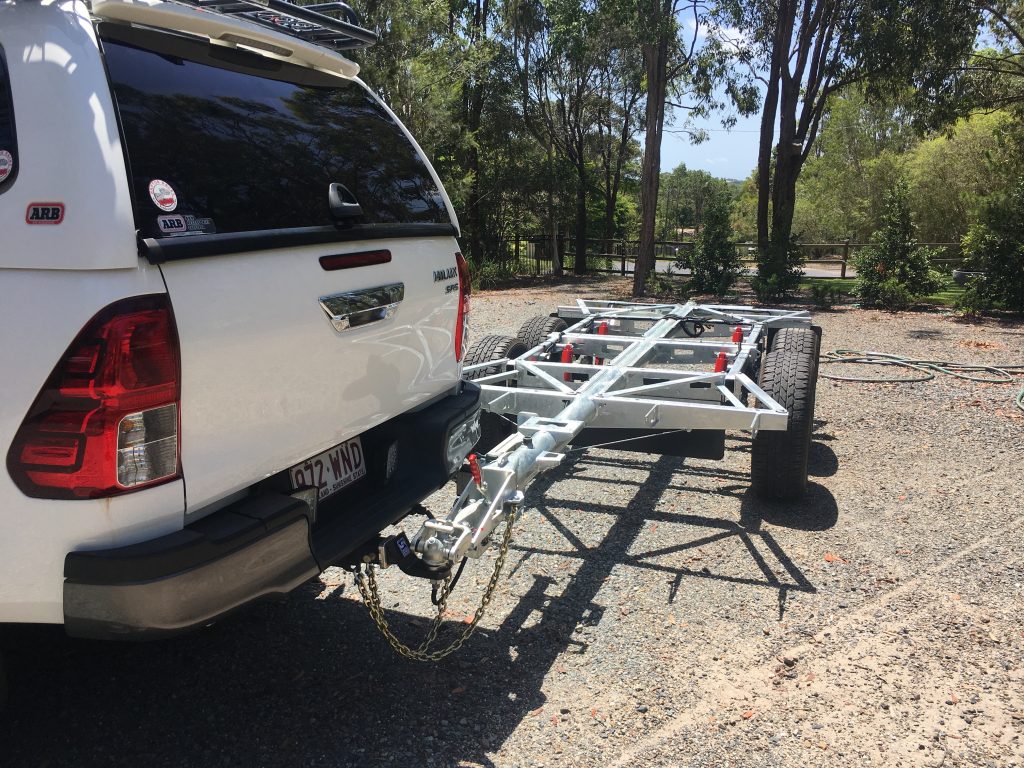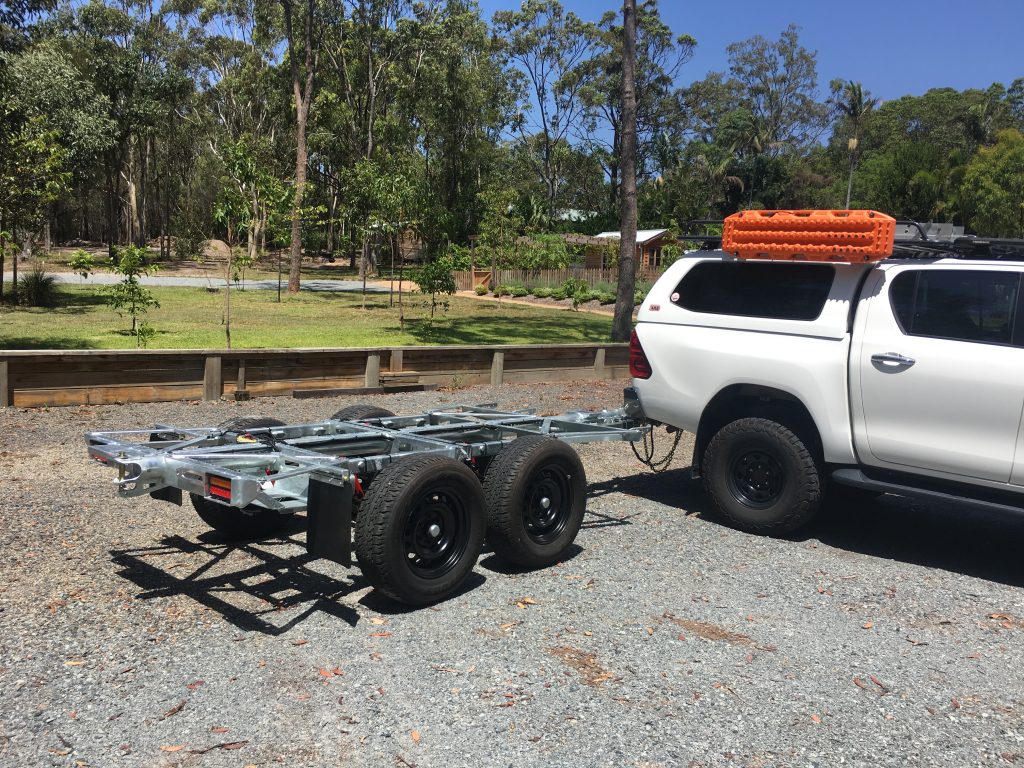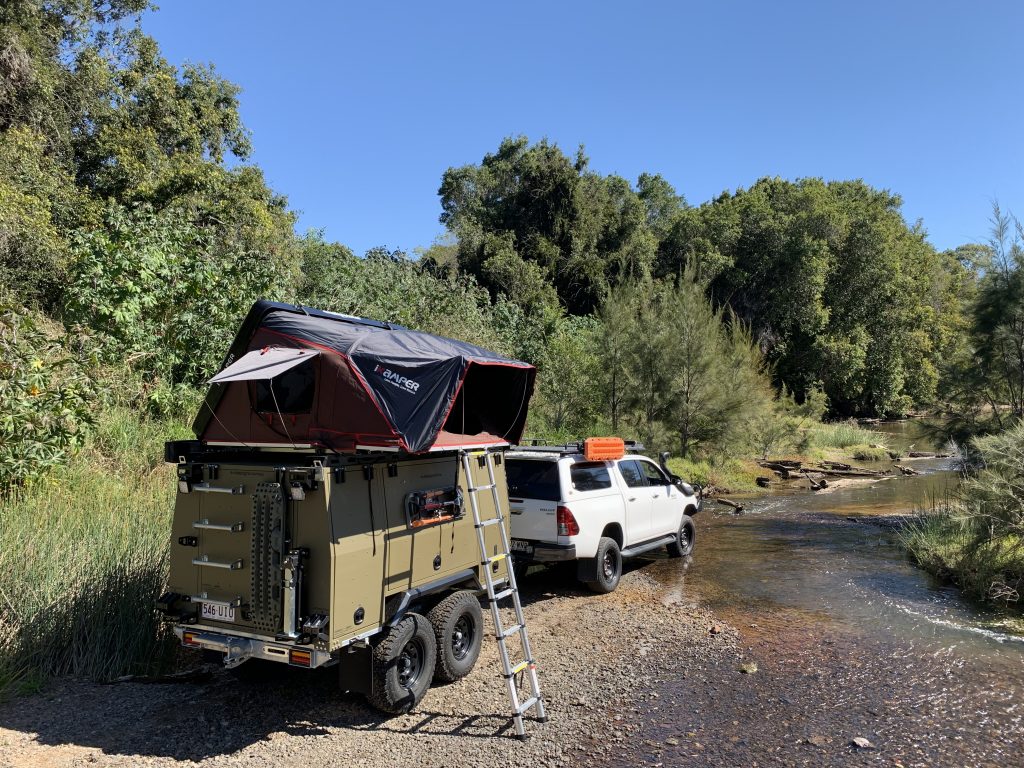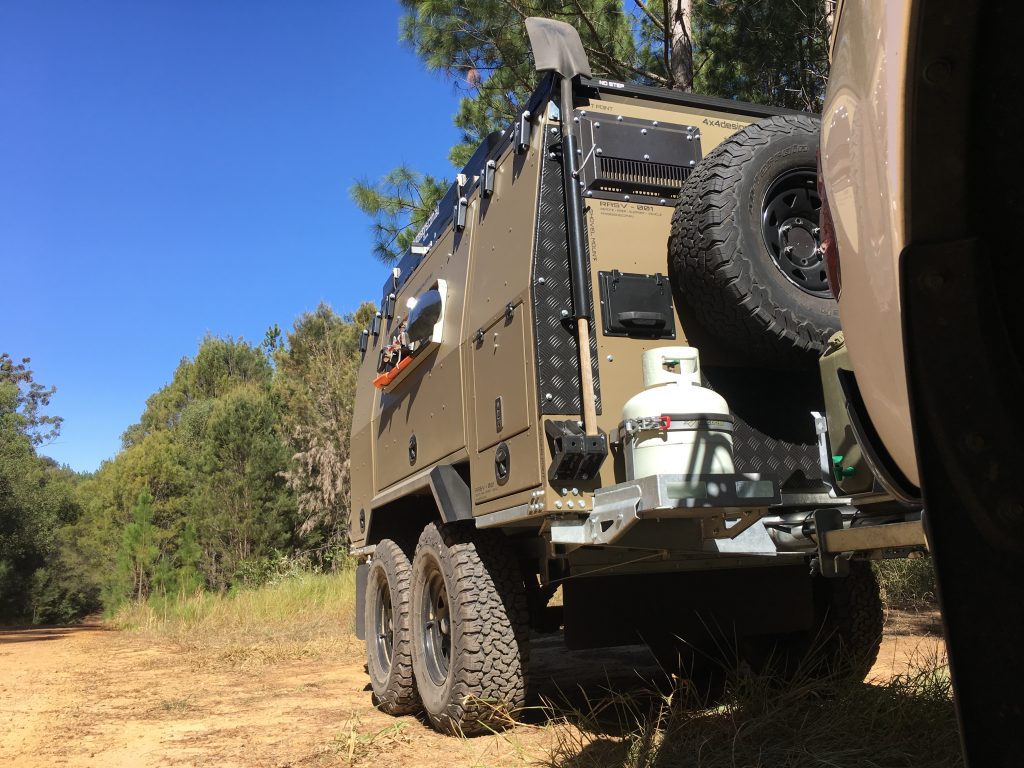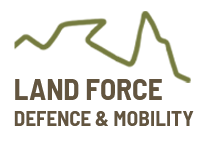Here’s everything you need to know about towing a Camper Trailer Off Road
Towing a Camper Trailer.
You don’t have to be Malcolm Douglas to be able to take a camper trailer into remote Outback Australia and return home alive. You just have to be confident in your off road driving abilities and use a bit of common sense.
Camper Trailers just make everything, Hmmm… shall we say little more technical and a tad more challenging. Sure, the basic off-road driving techniques are the same, like picking your line, maintaining momentum in sand, staying straight up and down hills, and using ruts to your advantage, but trailers add another level of difficulty, especially when it comes to the golden rule of off-roading: never drive anywhere you aren’t prepared to reverse out of or recover your vehicle from. Adding a trailer not only makes doing this more complex. But sometimes reversing a camper trailer may not be possible at all in certain off-road situations. Which makes having a rear mounted winch on your trailer not such a bad idea.
Off-road drivers know they must form a visual model of where their vehicle’s wheels are at any point in time, and this must be expanded to include the trailer’s wheels when towing. In other words, you need to know where the wheels are, whether the trailer will cut into a corner, and what forces it will exert on the tow vehicle. For example, if you’re ascending a rock ledge you need a squeeze on the throttle to get the front wheels up and over, then give another squeeze for the rear axle, but you’ll also need a third squeeze for the trailer.
Picking the right line
Picking the right line is important when Towing a Camper Trailer, but not as critical as it may first seem. While it’s important to keep the tow vehicle’s four wheels level to maximise traction. Picking the ideal line for the trailer’s wheels is far less important. As its wheels are not driven, and it’s geometry (hitch and two wheels) makes it essentially a tripod. So both wheels will be on the ground at all times anyway. If the trailer is canted over at a steep angle it is still almost as easy to pull as if it were level, and a good off-road camper trailer should have even better clearance than the average 4X4, and a higher rollover resistance, too. Therefore, give priority to the tow vehicle’s line for good traction and clearance over that of the trailer.
Towing on hills
Hill descents are where you’ll be glad you fitted an electric brake controller (you have done that, right?). The tow vehicle has the advantage of engine braking so it may need just a light touch on the brakes, whereas the trailer has no engine braking. However, that light touch on the brakes won’t necessarily slow the trailer much. In which case you should increase the sensitivity on the brake controller (so the camper trailer’s brakes will activate earlier relative to the tow vehicle’s brakes).
If you set the trailer brakes to come on with a little tow-vehicle braking. Then feather the brakes over a crest, the trailer can help retard the tow vehicle as it starts its descent. This isn’t possible with overrun brakes.
When starting a sharp descent, the trailer will initially retard the tow vehicle. But as the camper trailer comes over the crest that retardation will be lost, so be prepared. As ever, when descending, use ruts to your advantage and make sure the trailer and tow vehicle are in the same ruts. This may require some extra lining-up before the descent. If things go wrong there will be little chance of the trailer overtaking your 4X4 because the trailer is lighter. But make sure its tyres have been appropriately aired-down so it’s better able to brake itself on a hill. An exception could be a situation where there are no ruts and the brake bias is set so the trailer locks its wheels too easily. So getting the brake bias setting right is important.
The trailer will continue to push your 4X4 as long as it is descending and that can be used to your advantage where a descent turns immediately into an ascent.
It is important to keep in these ruts for this descent, so the trailer track must be the same as that of the tow vehicle, and some early lining up is essential. A light touch on the 4X4’s brakes should activate the trailer brakes.
Hill ascents are driven much the same as without a trailer. But there will be less weight on the front wheels of the tow vehicle due to the trailer’s tow ball mass, so expect to have reduced steering control and the potential for more front-wheel lifting. A lower gear may well be needed to account for the extra weight of the combination and, remember, you haven’t finished ascending a hill until the trailer is over the crest, not just the 4X4.
The real problem with hills is what happens if you fail the climb, and this is perhaps the biggest issue with driving a camper trailer off-road. The problem is that you’ll then need to back the trailer down the hill, and if it’s at an odd angle in relation to the tow vehicle you might not be unable to go forwards, or you might be unable to get enough steering lock on to maneuver the trailer where you need it.
A rutted and somewhat slippery ascent requiring momentum. This sort of marginal-traction situation is where a trailer that is easy to tow can be the difference between making it up the hill or having to perform a recovery.
Unhooking the trailer may not be much use if the tow vehicle can’t then ascend the hill from its position. The solution will often be to winch forwards. So consider that before you start a tricky ascent. If going forwards isn’t an option then the trailer may need to be unhooked – but how do you pull it backwards? That’s where a Tirfor (hand) winch comes in handy, with a plate for the jockey wheel. Once you have the trailer out of the way you can focus on the tow vehicle. If that sounds difficult, you’re not wrong, which is why you should look at all hill ascents as potential problems.
Towing a Camper Trailer in mud
Mud driving technique is the same with a trailer as without – low pressures and momentum – but it’s even more important to take a straight line so you have two wheel ruts, not six.
Mud driving is straightforward, literally. The key here is minimising resistance, so the trailer follows the 4X4’s wheels as closely as possible. The same is true of other soft surfaces such as snow and sand. Even so, the extra weight and resistance of the combination means you’ll need more momentum, or possibly a lower gear. Avoid turning because then, instead of all six wheels following in the same rut, you’ll have all six wheels making their own ruts, which will increase rolling resistance. And bear in mind that reversing a trailer in slippery or soft conditions may not be possible.
Towing across rivers
Water crossings need a bit more torque. Despite the fact the tow vehicle largely forces water out of the way of the trailer, while again any change of direction will increase trailer resistance. Backing a trailer out of deep water isn’t easy. Especially if there is any appreciable flow. Any off-road trailer worthy of the name will be at least as waterproof as the average 4X4.
Towing on sand
Trailers work well on sand but avoid turning so just one set of ruts is made, use lots of momentum and be prepared for recoveries.
Sand driving with a trailer is possible but you need to drop tyre pressures more than with a solo 4×4. The big problem with sand and trailers is when you find yourself on any kind of side slope. When on a slope, the trailer exerts a sideways force on the tow vehicle, and the sand might not offer enough lateral traction to resist. So you could end up with the back-end sliding down the slope. That problem worsens as the wheels forge their own ruts. If this starts to occur the best solution is to turn downwards and drive out. This is, of course, a major problem if ‘downwards’ involves turning towards a rising tide.
The other big risk with sand driving is making ascents. Firstly, any slight side angle will, again, see the trailer pull the back of your 4X4 sideways. Secondly, reversing a trailer down a sandy slope is often next to impossible. Because the sand offers so little lateral traction, meaning the trailer can easily jackknife. It is also very difficult to drive uphill in sand to reposition the tow vehicle. Even worse, recoveries in sandy country can be difficult. There’s not usually a conveniently placed tree to act as a winch anchor. Solutions include digging, the use of recovery boards and relying on other vehicles to help you out.
General driving
A Camper Trailer decreases a vehicle’s maneuverability but not the size of the outside turning circle, as any decent off-road trailer should still allow you to turn at full lock. What does change is the size of the inside turning circle, as the trailer wheels cut inside those of the tow vehicle. Swinging out wide with the tow vehicle will help, and in general when towing you need to think and plan ahead much more than when driving without a trailer.
Any good off-road trailer should still allow you to turn at full lock.
Even on the road, backing a trailer at full lock may result in a jackknife, and off-road the chances of this occurring increase. One solution is to reverse your 4X4 slightly at full opposite lock. Intentionally jackknifing the trailer to squeeze a little more turning circle. You can also unhook the trailer, while a third option is to use a winch to literally drag the front of the 4X4 around. You can also get creative with intentional skids.
For example, manually applying the trailer brakes and then driving the 4X4 may induce enough of a skid or slip to move the 4X4 enough to make it around an obstacle. Alternatively, if you have a part-time 4×4 vehicle, run in 2WD and try a similar technique to move the rear wheels sideways. Always use techniques such as these with a fair degree of caution. In fact, this advice summaries the entire approach to off-road trailer driving. Having said that, once you master off-road towing techniques you’ll be amazed at where you can drag your camper trailer.
